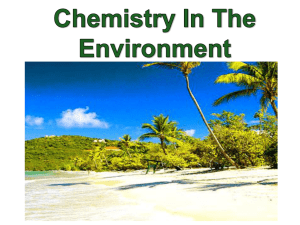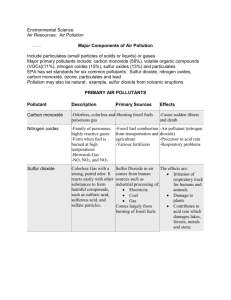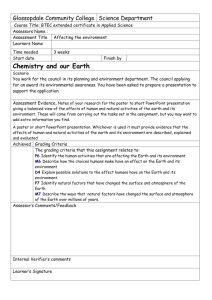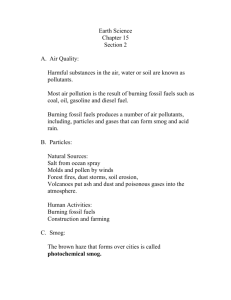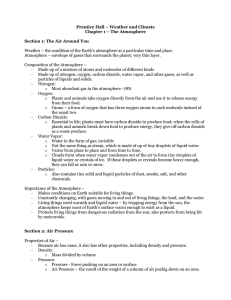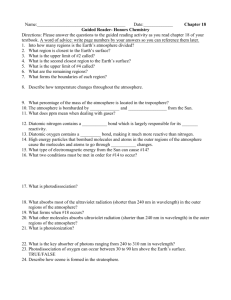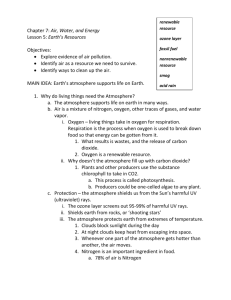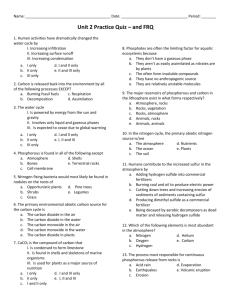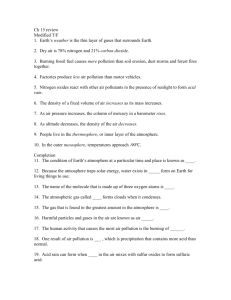Answers
advertisement
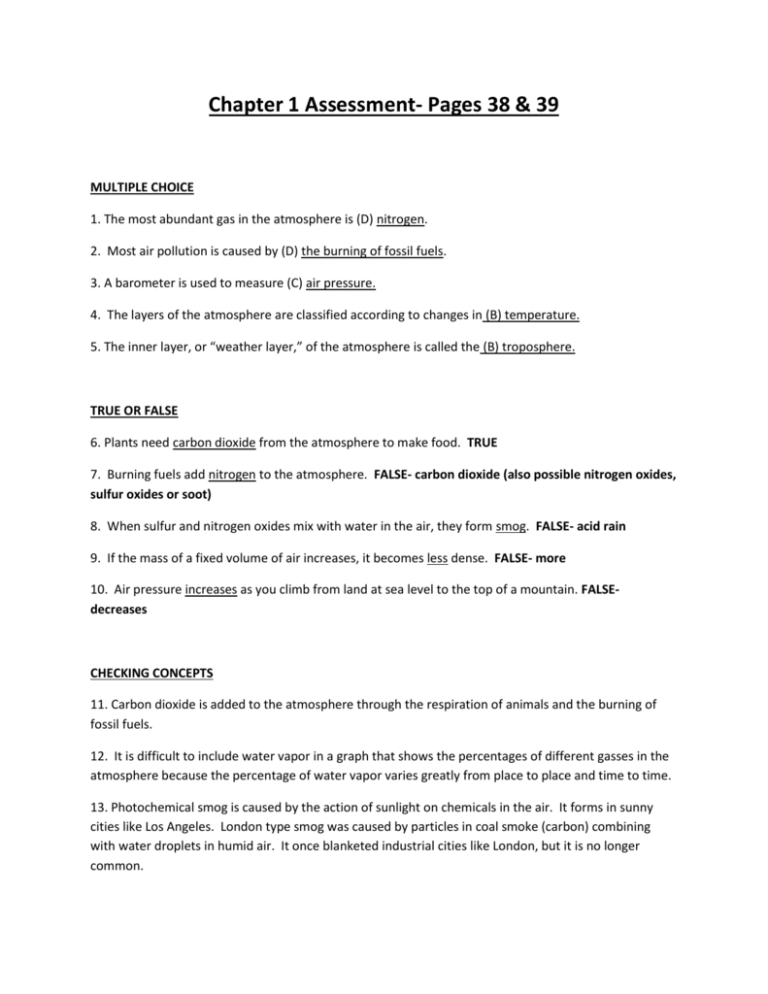
Chapter 1 Assessment- Pages 38 & 39 MULTIPLE CHOICE 1. The most abundant gas in the atmosphere is (D) nitrogen. 2. Most air pollution is caused by (D) the burning of fossil fuels. 3. A barometer is used to measure (C) air pressure. 4. The layers of the atmosphere are classified according to changes in (B) temperature. 5. The inner layer, or “weather layer,” of the atmosphere is called the (B) troposphere. TRUE OR FALSE 6. Plants need carbon dioxide from the atmosphere to make food. TRUE 7. Burning fuels add nitrogen to the atmosphere. FALSE- carbon dioxide (also possible nitrogen oxides, sulfur oxides or soot) 8. When sulfur and nitrogen oxides mix with water in the air, they form smog. FALSE- acid rain 9. If the mass of a fixed volume of air increases, it becomes less dense. FALSE- more 10. Air pressure increases as you climb from land at sea level to the top of a mountain. FALSEdecreases CHECKING CONCEPTS 11. Carbon dioxide is added to the atmosphere through the respiration of animals and the burning of fossil fuels. 12. It is difficult to include water vapor in a graph that shows the percentages of different gasses in the atmosphere because the percentage of water vapor varies greatly from place to place and time to time. 13. Photochemical smog is caused by the action of sunlight on chemicals in the air. It forms in sunny cities like Los Angeles. London type smog was caused by particles in coal smoke (carbon) combining with water droplets in humid air. It once blanketed industrial cities like London, but it is no longer common. 14. Acid rain may make lake and pond water so acidic that many types of plants and animals can no longer live in it. Acid rain may also cause damage to tree needles and the surfaces of buildings and statues. 15. Moving upward from the Earth’s surface… troposphere, stratosphere, mesosphere and thermosphere. 16. As you move upward through the troposphere, the temperature decreases by about 6.5 degrees Celsius for every 1,000 meter increase in altitude. This is because the air becomes less dense and there are fewer molecules to hold heat. 17. SKIP THINKING CRITICALLY 18. You would experience a decrease in temperature and also in the pressure and density of the air. You would feel colder because there are fewer molecules to hold the heat. It would be more difficult to breathe because there are fewer oxygen molecules to take in. The density is lower because gravity is pulling all of the molecules to the lowest point. 19. Air pressure decreases as elevation or altitude increases. An aneroid barometer will show a lower air pressure as altitude increases. 20. Burning high sulfur coal can produce sulfur oxides and other air pollutants that may lead to the formation of acid rain hundreds of kilometers away, where it may harm a forest. 21. Natural sources of air pollution include molds, dust, pollen, salt from ocean spray, and particles from forest fires, soil erosion, dust storms, and volcanoes. Human sources of air pollution include soot and carbon dioxide and other gasses from burning of fuels, such as wood, coal, oil and gas, and dust particles from farming and construction. TEST PREPARATION 26. B 27. A 28. D 29. C
